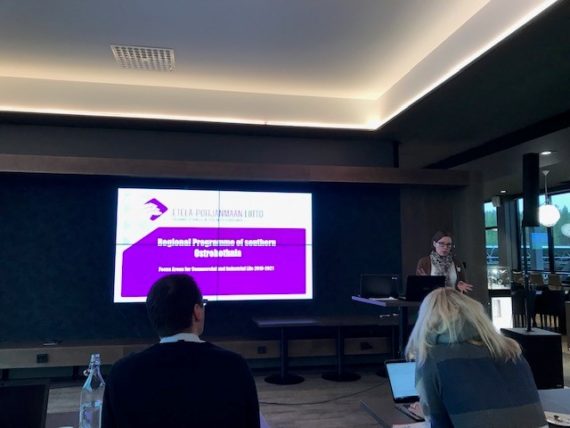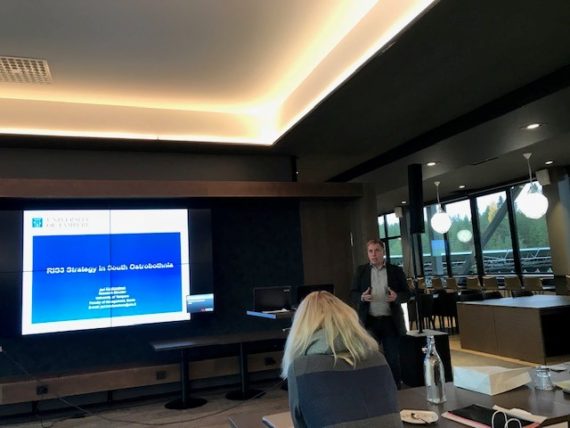South Ostrobothnia
Director of International Affairs and Culture Marjatta Eväsoja from Regional Council of South Ostrobothnia welcomed the participants, and gave an overview to the region, regional culture and emphasized the spirit of entrepreneurship in the region.
In the afternoon, Juha Alarinta, research director of the Epanet University presented the good practice of regional innovation policy instrument “Epanet University Network and University Consortium of Seinäjoki”. To strengthen the local academic society based on a close triple helix cooperation between industry, university and governmental entities – a unique university network has been built up in 1998 with 12 new professorships and close cooperation with the national University landscape. With more R&D work and a focus on creating links between academics and the regional economy, four fields of research groups (Smart and energy efficient systems; Sustainable food solutions; health and creativity; entrepreneurship and business concepts) support regional competitive economic sectors by conducting advanced research and development work on.

The RIS3 presentation of the hosting region was shared by Sanna Puumala from Regional Council of the South Ostrobothnia, who presented the regional programme and Jari Kolehmainen from Tampere University, who provided insights about the RIS3 process, the identification of competitive and growing sectors as thematic foci for the RIS3, operational entities and principles of the RIS3.

The focus of the RIS3 in Ostrobothnia is on Creating sustainable and efficient food systems and new bio economy solutions, Development smart and energy efficient systems, Development of the production of services and experiences. Current strengths: South Ostrobothnia is the most specialised Finnish region in primary production and food-stuff refining.
Satakunta Region
Marko Lehtimäki from Prizztech Ltd presented Satakunta region’s RIS3. The corner stones of the regional economy are: Metal Industry (Heavy engineering, offshore, automation),Food processing industry (diversified production eg. poultry), Forestry industry, Pulp and paper industry, Energy production, Process industry,Ports and logistics.
Main competitive advantages in Satakunta are:
University Consortium of Pori. The University Consortium is a centre of four universities and local research centers working in the area with close connection to the business life.
Satakunta has a University of Applied Sciences and a technology center. They both operate in several municipalities.
EmpInno is an EU funded project (Interreg Baltic Sea Region, ERDF) for the fostering the implementation and improvement of regional smart specialization strategies (RIS3) in medium sized cities and regions in the Baltic Sea Region. The national co-financer is the Ministry of Economic Affairs and Employment of Finland.
Text and photos: Natalia Narits, Project Manager
